Who Discovered the Very First Magnet?
How long have magnets been around, and who was the first person to discover this amazing material?
Good question, and the answer depends on who you ask and what you mean by “discover.” You see, magnets make the world go ‘round, and stories about the discovery and use of magnets seem to come from almost every corner of the world. Read on for some enticing tales about the evolution of the modern magnet.
In Greece
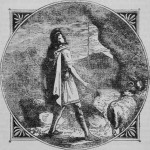 Roughly 4,000 years ago, a Greek shepherd named Magnes is said to have been tending his sheep in a region of northern Greece called Magnesia. He took a step and suddenly found that the nails that held his shoe together and the metal tip of his staff were stuck fast to the rock he was standing on! Intrigued, he began digging and discovered the first recorded lodestone. Lodestones were henceforth known as “magnetite,” probably named after Magnes or Magnesia.
Roughly 4,000 years ago, a Greek shepherd named Magnes is said to have been tending his sheep in a region of northern Greece called Magnesia. He took a step and suddenly found that the nails that held his shoe together and the metal tip of his staff were stuck fast to the rock he was standing on! Intrigued, he began digging and discovered the first recorded lodestone. Lodestones were henceforth known as “magnetite,” probably named after Magnes or Magnesia.
In Rome
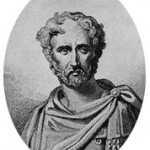 In the early A.D. years Pliny the Elder, a Roman author and naturalist who conducted significant scientific research for the then Roman Emperor Vespasian, documented a hill that was made of a stone that attracted iron. Pliny attributed the powers of magnetite to magic, launching years of superstitious theories about the material, including the possibility that ships that had disappeared at sea had actually been attracted to magnetic islands. On an unrelated but interesting note, Pliny died in the eruption of Pompeii.
In the early A.D. years Pliny the Elder, a Roman author and naturalist who conducted significant scientific research for the then Roman Emperor Vespasian, documented a hill that was made of a stone that attracted iron. Pliny attributed the powers of magnetite to magic, launching years of superstitious theories about the material, including the possibility that ships that had disappeared at sea had actually been attracted to magnetic islands. On an unrelated but interesting note, Pliny died in the eruption of Pompeii.
In Scandinavia
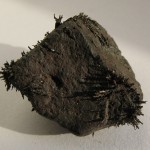 With a large lodestone deposit in Scandinavia and not enough light to navigate ships by in the winter, the Vikings had plenty of incentive to put the magnetic properties of lodestone to practical use. As early as 1,000 B.C., the Vikings are said to have been using a compass-like tool made of lodestone and iron. History tells us that Viking sailors utilized a magnetized iron needle placed into a piece of straw–and floated in a bowl of water–to indicate north and south.
With a large lodestone deposit in Scandinavia and not enough light to navigate ships by in the winter, the Vikings had plenty of incentive to put the magnetic properties of lodestone to practical use. As early as 1,000 B.C., the Vikings are said to have been using a compass-like tool made of lodestone and iron. History tells us that Viking sailors utilized a magnetized iron needle placed into a piece of straw–and floated in a bowl of water–to indicate north and south.
In China
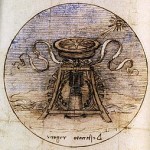 The Chinese may have developed a mariner’s compass even earlier than the Vikings and with similar construction. The Chinese navigated using a splinter of lodestone floated on water as early as 800 A.D. Explorers like Marco Polo brought the magnetic compass back to Italy, finally enabling the Europeans to explore the oceans that the Vikings had already been navigating using their own version of the compass for at least 500 years.
The Chinese may have developed a mariner’s compass even earlier than the Vikings and with similar construction. The Chinese navigated using a splinter of lodestone floated on water as early as 800 A.D. Explorers like Marco Polo brought the magnetic compass back to Italy, finally enabling the Europeans to explore the oceans that the Vikings had already been navigating using their own version of the compass for at least 500 years.
In France
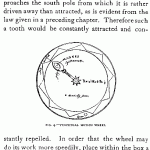 In the 1200s, French scholar Petrus Peregrinus penned one of the first written accounts of the scientific properties of magnets. His report includes a drawing and discussion of the freely pivoting compass needle–a key component of the first dry compass. Legend has it that Peregrinus wrote these works while participating in the Pope-sanctioned crusade/attack on the Italian city of Lucera. Talk about multi-tasking!
In the 1200s, French scholar Petrus Peregrinus penned one of the first written accounts of the scientific properties of magnets. His report includes a drawing and discussion of the freely pivoting compass needle–a key component of the first dry compass. Legend has it that Peregrinus wrote these works while participating in the Pope-sanctioned crusade/attack on the Italian city of Lucera. Talk about multi-tasking!
In England
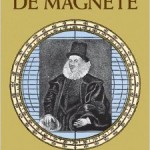 The first scientist to actually make a magnet was actually a physician—Britain’s William Gilbert. In 1600 he discovered not only that the Earth itself was a magnet, but also that magnets could be forged out of iron and that their magnetic properties could be lost when that iron was heated.
The first scientist to actually make a magnet was actually a physician—Britain’s William Gilbert. In 1600 he discovered not only that the Earth itself was a magnet, but also that magnets could be forged out of iron and that their magnetic properties could be lost when that iron was heated.
In Denmark
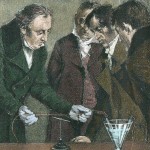 Two hundred years later, in 1820, Hans Christian Oersted began to explore the relationship between electricity and magnetism. He demonstrated his theory by setting a magnetic compass near an electrical wire, derailing the compass’s accuracy.
Two hundred years later, in 1820, Hans Christian Oersted began to explore the relationship between electricity and magnetism. He demonstrated his theory by setting a magnetic compass near an electrical wire, derailing the compass’s accuracy.
Scientists continue to explore the amazing properties of magnetism and electromagnetism in labs all over the world. Will you be one of them?
Tags: Chinese compass , compass , dry compass , first magnet , Hands Christian Oersted , history of magnets , lodestone , Magnes , magnet discovery , magnet history , magnet origins , magnetite , magnets , Petrus Peregrinus , Piny the Elder , Viking navigation , who discovered magnets , William Gilbert
Share This:

Thanks so much for this article. I’ve been thinking a lot lately about where we would be if someone never discovered how to move electrons in a wire with magnetism and vice versa…